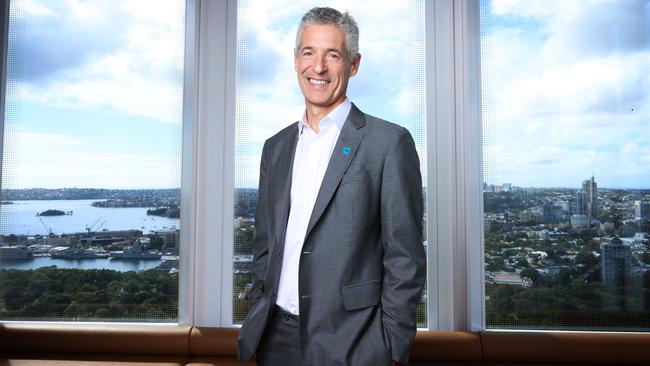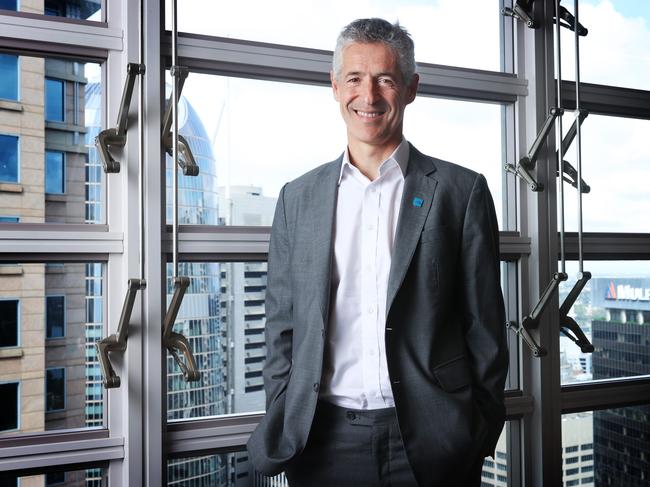Critics of private credit miss the point: Hamilton Lane’s Juan Delgado
Australian investors want more exposure to private markets, even as warnings rise. Hamilton Lane boss Juan Delgado says low default rates show the strength of private credit.

Warnings on risks in the booming private credit market are exaggerated, with low default rates proving the strength of the asset class. That’s the view of Juan Delgado, co-CEO of alternative investment manager Hamilton Lane, who says critics of the hot market have completely missed the point.
With institutional and high-net worth investors still piling in to private credit, he believes 2025 is the year it will go truly mainstream with retail investors, starting in the US. And by all accounts Australian investors are ready for it.
“Through digital technology and other means, and just the overall regulatory stance in the US, there is going to be an arrival of private markets becoming completely mainstream, and there’s no regulatory barrier preventing individuals from accessing it. I think very much it will trickle through the rest of the world over the next few years,” Mr Delgado told The Australian in an exclusive interview.
“The biggest growth of this market is really pure direct lending … it has been filling a need in corporate funding globally and that’s why you see very, very low default rates. We saw that through Covid and through rate increases (from 2022).
“Even now, we’re in a market (of declining rates). So when people point to higher cost of debt and competition and support that, they just miss the point that we’ve seen the expansions of these asset classes through the rate hike period,” he said.
Private markets are booming and by some estimates will grow from $US13 trillion ($20.5 trillion) in assets to more than $US20 trillion by 2030.
Locally, the Australian Securities & Investments Commission is preparing to this week release a wide-ranging report on public and private markets, alongside a discussion paper canvassing emerging regulatory issues.

While private equity has had its challenges, private credit has been one of the hottest tickets in the market, in part due to the lure of seemingly lower risk and volatility and attractive returns. At $US2 trillion ($3 trillion) globally by some estimates, private credit, also known as private debt or direct lending, is now 10 times larger than it was 15 years ago, with investors, including Australia’s big super funds, chasing returns from lending to businesses and developers looking to bypass banks.
But the rush into the opaque asset class has caught the attention of regulators, both at home and abroad. The Australian Prudential Regulation Authority and the Australian Securities & Investments Commission have both increased their monitoring of private finance risks.
Mr Delgado, in Australia to meet with investors including major super funds, acknowledged concerns were partly around liquidity – these investments are typically long-dated – but argued the industry was already well regulated.
“We are regulated lenders and institutions under supervision … the structures are very, very well tried and tested,” he said.
He acknowledged spreads had come down from their highs.
“This is not a market that people should just talk about as if it’s not highly sensitive. As we’ve seen the change in rates in the US, the election there, the macro elements, we’ve seen spreads come down for the larger borrowers. But we’re still looking at very healthy spreads and very healthy absolute levels of return,” he said.
The rise of private markets has been fuelled by long-term investors, including Australia’s bulging $4 trillion super sector.
The nation’s largest super fund, the $330bn AustralianSuper, wants to triple its exposure to global private credit by the end of the decade, with its current holdings valued at around $7bn.
Its soured investment in US online education firm Pluralsight, in which it was forced to write off more than $1.1bn, has not put the fund off private markets.
In contrast, the country’s second largest fund, Australian Retirement Trust, told The Australian in late 2024 it had cooled on parts of the private credit market due to the soaring demand for the asset class, with the super fund warning of lower lending standards and reduced returns as investors rushed in.
ART’s head of investment strategy, Andrew Fisher, said the fund had cooled on what he said was the riskier end of the asset class, including mezzanine financing, but it was still assessing opportunities in the middle market space, though more cautiously, including lending directly to small and medium businesses.
With 5 per cent of the fund’s assets tied up in private credit, ART’s exposure, at $15bn, is already more than double AustralianSuper’s.
Australian investors are among the most hungry for private markets, a global report released by Hamilton Lane last month found.
The survey of wealth advisers found 61 per cent of Australian clients were “very interested” in the asset class, compared to 53 per cent of US advised clients.
All up, a third of advisers globally plan to allocate 20 per cent or more of client portfolios to private markets in 2025, with another third planning to put in 10 per cent.
Hamilton Lane’s head of private wealth in Australia, Scott Thomas, said he expected Australian investors’ enthusiasm for private markets to increase in the coming years.
“The strong interest in private markets among our Australian private wealth clients is directly aligned with the report’s findings, which underscore a global shift towards this asset class for diversification and long-term performance enhancement,” he said.




To join the conversation, please log in. Don't have an account? Register
Join the conversation, you are commenting as Logout